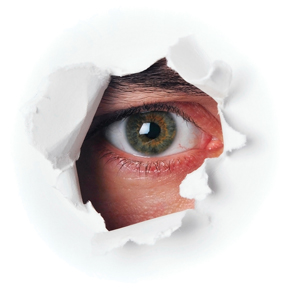Diabetes is sneaky. For most, it starts with seemingly simple and harmless symptoms. Unusual thirst or hunger. Frequent urination. Slightly blurry vision. None of us would be particularly frightened by these common signs, but together or alone, they can be red flags of a frightening disease.
A growing epidemic in the United States, diabetes affects approximately 25 million people – with about one-third of those patients not even aware that they have it. Nearly 250,000 children are diabetic, and approximately 27 percent of adults over 65 have been diagnosed. African-Americans and Hispanics have increased risks for developing diabetes.
There are three types: gestational diabetes, type 1, and type 2 diabetes. Gestational diabetes affects pregnant women and usually corrects itself after delivery, but may be a marker for the development of diabetes in later life. Type 1 diabetes, once called juvenile diabetes, usually starts in childhood or young adulthood. While a less common form, it requires careful management and daily insulin.
The most common form of the disease is type 2 diabetes, and its numbers continue to rise annually. The exact causes are unknown, but diet, exercise, and other lifestyle factors play significant roles in its development. The treatment is usually dietary, with the addition of medications or insulin if the blood sugars are not properly controlled with diet alone.
If you have diabetes, your body has difficulty using a sugar called glucose, the body’s key source of energy. Each type of diabetes has a different cause for poor glucose management by your cells, but the effects on the body are the same.
Whatever the type and whatever the cause, diabetes can have serious consequences, affecting a number of organ systems. Hardening of the arteries for example, or atherosclerosis, will develop more rapidly in diabetics, and it can affect any artery in the body, causing peripheral artery disease, heart attack, or stroke. The nervous system is also at risk, resulting in numbness of the lower legs and feet. Elevated blood pressure, kidney disease, and issues of the skin are also problematic. But one of the most devastating complications involves your vision.
“Your eyes are particularly vulnerable to the effects of diabetes,” says Stewart O’Keefe, MD, a board-certified ophthalmologist who practices at Stony Point Surgery Center. “It’s important to maintain a high level of vigilance, even if there are no visual changes.”
While diabetes can exacerbate cataracts and glaucoma, the most insidious form of diabetic eye disease is diabetic retinopathy. The retina, the nerve layer of the eye, has many small blood vessels supplying oxygen to the cells. One of the complications of diabetes is damage to small blood vessels, and the eye is a particular target.
“Diabetic retinopathy is found in up to half of all diabetic patients,” says Dr. O’Keefe. “It can start without warning. There is no pain, and vision may be fine in the initial stages. Later in the disease process, floating bits of blood and debris may block areas of your visual field, and there may be swelling of the retina, or macular edema, causing severe blurriness. Occasionally, there may be sudden and complete loss of vision due to hemorrhage within the eye.”
Early in the disease process, small aneurysms, or areas of weakness in the blood vessel wall, form in the retinal vessels. Scar tissue builds, preventing adequate oxygenation of the retina. As the disease progresses, the reduced blood supply stimulates the growth of new blood vessels as the body’s way of trying to get more oxygen to the cells.
“This seems like it should be a good solution,” Dr. O’Keefe says, “but the new vessels are abnormal and very fragile. They grow within and over the retina and around the gelatin-like vitreous which fills the eyeball, and can easily bleed, blocking vision.”
Another later complication of diabetic retinopathy is macular edema (or swelling) of the center of the retina, which is responsible for the clearest vision. This causes blurring in the middle of the visual field.
“While diabetic retinopathy can’t be completely avoided in many patients,” Dr. O’Keefe says, “its course can often be slowed down, and some visual changes may be reversed with appropriate treatment.”
The first line of treatment, according to Dr. O’Keefe, is good control of blood sugars, along with diligent blood pressure and cholesterol management. The specialist recommends regular comprehensive eye exams and notes that any change in vision should prompt an immediate visit to an ophthalmologist.
Diabetic eye exams include examination of the retina using a strong lens called an ophthalmoscope, which allows the doctor to carefully examine the retinal surface for signs of leaking, swelling, retinal nerve damage, or bleeding. The eyes will be dilated so that the entire retina can be examined.
The pressure inside the eyes will be measured and visual acuity will be tested to see if macular edema has started. In some cases, a fluorescein angiogram may be recommended. In this test, a special dye is injected into the arm, and the eye is examined to see if the dye is leaking from the retinal vessels.
Careful management of both the diabetes and any retinal changes can greatly reduce the severity or loss of vision in most patients.
“If new vessels or macular edema are caught early, laser treatment or therapeutic injections can be started,” says Dr. O’Keefe. “These treatments, which may take several sessions, helps to shrink the new vessels and may prevent bleeding and further swelling.”
Even patients dealing with sudden loss of vision from hemorrhage into the vitreous have reason to hope.
“A vitrectomy, removal of the vitreous gel and replacing it with clear fluid, can be performed, often significantly restoring vision following an apparently devastating bleed.”
While Dr. O’Keefe acknowledges that there is no cure for diabetic retinopathy, he is bolstered by ongoing research in the field. “There may soon be medications which prevent or even cure diabetic retinopathy, but until a treatment is found, we can still help many patients preserve and protect their vision.”




